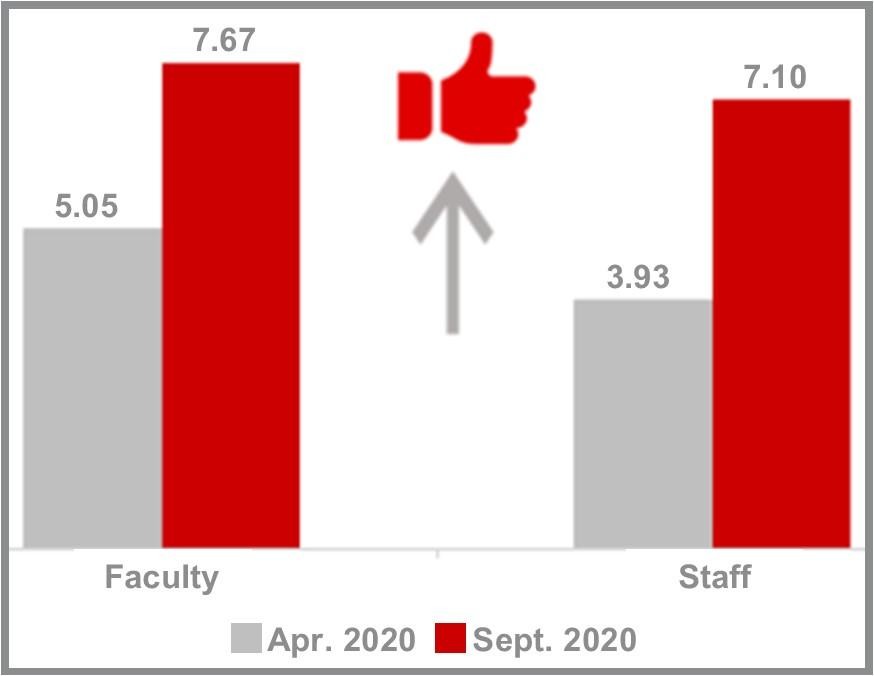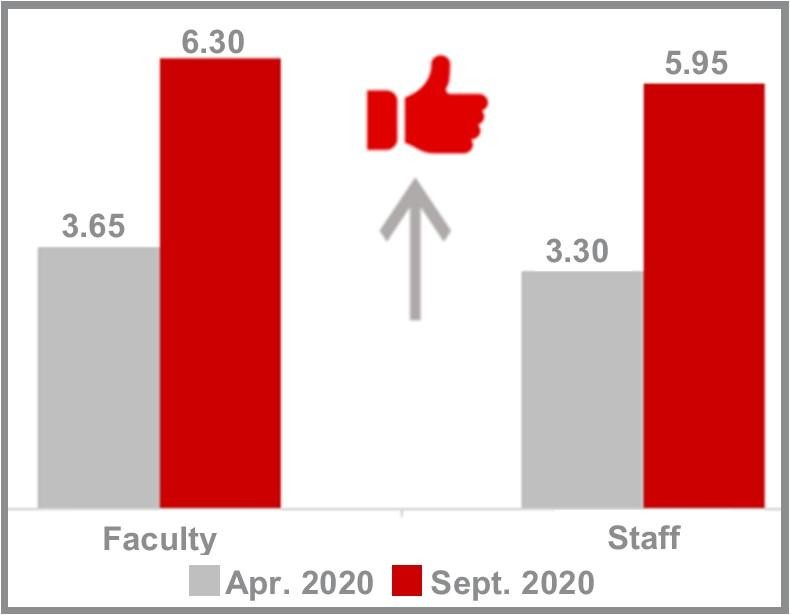
EBR-58 | July 2021
Continuing Extension Programming During a Pandemic: University of Maryland Extension Adapts to Dynamic Learning


During spring 2020, the COVID-19 pandemic caused multiple countries to institute nationwide lockdowns. In Maryland, the Governor issued a stay-at-home order that led to closing University of Maryland Extension offices to the public and Extension employees began telework status.
Extension administration established a short-term task force to address the needs of faculty and staff across the state so programming could continue. Even though office doors were locked, Extension was still open. The team worked quickly to establish a website for supportive software along with directions for use and instructional videos to assist with technology. The task force conducted a state-wide survey to assess the learning needs of Extension faculty regarding distance teaching and the use of virtual teaching options. Based on results, a 12- week series of instructional webinars were offered.
In early fall 2020, Extension began to reopen offices that met safety metrics established by the state government and University protocols. At the time, faculty and staff received a follow-up survey to assess their level of confidence in continuing hybrid technology-delivered programming, their perceptions of clientele readiness to continue to receive virtual programs, and any personal challenges they may have experienced. The survey was submitted to the University’s Institutional Review Board (IRB) and approved for release. IRB # 1644829
The survey questions concentrated on personal and professional experiences as well as observations of constituents in communities. The total number of respondents was 179 faculty and staff. This post-survey recognizes the factors, challenges, and outcomes of the faculty and staff during the quarantine (Table 1).
| Working From Home | |
|---|---|
| Challenges | Benefits |
| Lack of interaction with co-workers | Flexibility in schedule |
| Lack of adequate equipment | Improved work/life balance |
| Availability of internet | Less stress due to no commute |
| Lack of adequate home office space | Increase in knowledge related to technology |
| Distractions at home/caring for children | Expanded concepts for communication |
| Approximately 30% reported no concerns | |
Comfort and Adaptability of a Telework Environment
- Increased proficiency in the use of virtual meeting platforms
- Increased on-line teaching to reach clientele
- Sought on-line learning webinars
- Learned new equipment skills
- Learned new software
Comparative Confidence Levels of Virtual Teaching
Overall, there was an observable increase in confidence level in virtual teaching and technology use for all faculty and staff groups after mandatory telework (Figure 1).
Clientele Limitations and Readiness Related to Virtual Participation
The majority of responding groups reported observing a statistically significant increase in readiness of clientele to continue participating in virtual programs after mandatory telework (Figure 2).
Responses of UME Staff and Faculty will Influence Plans and Priorities
- Expanding a clientele-friendly learning management system so faculty can continue to offer educational programming via technology-delivered approaches. A training plan will enhance UME faculty’s use of the system.
- Developing a training series focused on the principles of virtual teaching,program design, and delivery.
- Establishing a web-based support site focused on creating effective home office space, telework/telecommute tips and avoiding virtual office fatigue.
- Evolving the Extension culture to accept telework and virtual program delivery as a component of work-life balance.
JEFF HOWARD
jwhoward@umd.edu
AMY RHODES
arhodes1@umd.edu
CHENZI WANG
CZW0017@umd.edu
This publication, Continuing Extension Programming During a Pandemic (EBR-58), is a part of a collection produced by the University of Maryland Extension within the College of Agriculture and Natural Resources.
The information presented has met UME peer-review standards, including internal and external technical review. For help accessing this or any UME publication contact: itaccessibility@umd.edu
For more information on this and other topics, visit the University of Maryland Extension website at extension.umd.edu.
University programs, activities, and facilities are available to all without regard to race, color, sex, gender identity or expression, sexual orientation, marital status, age, national origin, political affiliation, physical or mental disability, religion, protected veteran status, genetic information, personal appearance, or any other legally protected class.
When citing this publication, please use the suggested format below:
Howard, J., Rhodes, A., & Wang, C. (2021). Continuing Extension Programming During a Pandemic: University of Maryland Extension Adapts to Dynamic Learning (EBR-58). University of Maryland Extension. go.umd.edu/EBR-58.